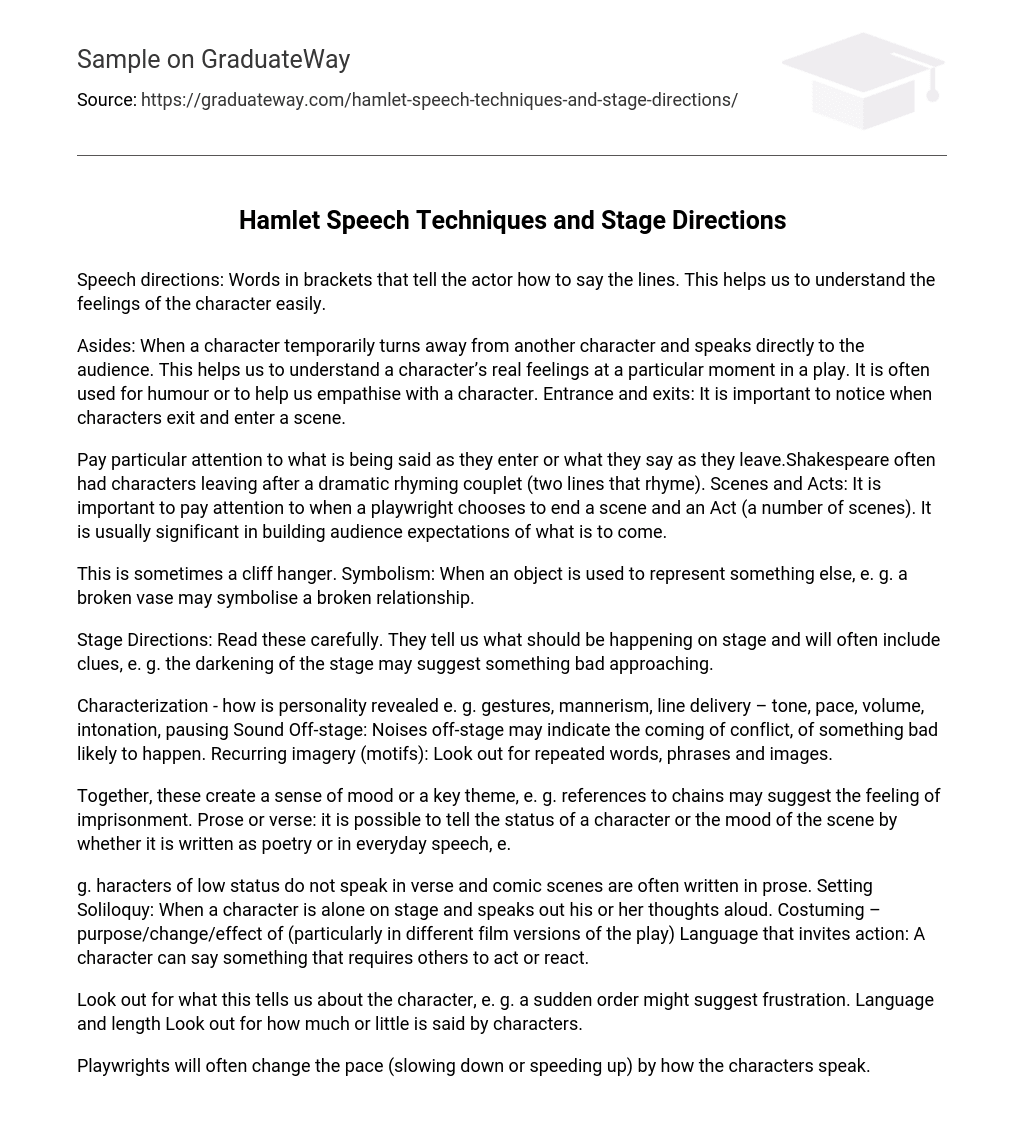Speech directions provide guidance to actors on how to deliver their lines, using words in brackets that convey the intended emotions of the character.
In theatre, characters often use asides to briefly speak directly to the audience while not facing other characters. This enables us to understand the character’s genuine emotions at a specific moment in the play. Generally, asides serve to create humor or generate empathy for a character. Moreover, it is important to observe how characters enter and exit scenes.
When watching a play, it is crucial to pay close attention to the dialogue of characters as they enter or exit a scene. Shakespeare often had characters deliver a strong rhyming couplet before leaving the stage. Additionally, it is important to take note of when scenes or Acts come to an end, as these moments help build anticipation for future events.
Sometimes, it can be a cliffhanger, as symbolism is involved. Symbolism occurs when an object is utilized to convey or represent something else – for instance, a fractured vase may symbolize a fractured relationship.
Stage Directions: It is important to read and pay attention to these directions as they provide guidance on what should be happening on stage. They also often provide hints or indications, such as the dimming of the stage to suggest an impending danger.
The text explores the concept of characterization, focusing on the various ways in which personality can be revealed, such as through gestures, mannerisms, and line delivery, including tone, pace, volume, intonation, and pausing. It also discusses the significance of off-stage noises as a potential indication of impending conflict or negative events. Additionally, the text highlights the importance of recurring imagery, noting that repeated words, phrases, and images should be closely observed for their symbolic significance.
These elements combine to establish a mood or central theme. For example, references to chains could convey a sense of confinement. The use of prose or verse can also indicate the status of a character or the mood of a scene; poetry may signal a more elevated tone, while everyday speech suggests a more casual atmosphere.
Characters of low status typically do not speak in verse, and comic scenes are usually written in prose. One example of this is when a character is alone on stage and soliloquizes their thoughts aloud. Costuming can serve various purposes and provoke different effects, especially in different film adaptations of the play. Additionally, language that prompts action can be used by a character to make others act or react.
Pay attention to the implications about character traits, such as how a sudden order might indicate frustration. Also, observe the language used and the amount of dialogue spoken by the characters.
Playwrights frequently alter the tempo of dialogue through the way characters speak, either by slowing it down or speeding it up.





